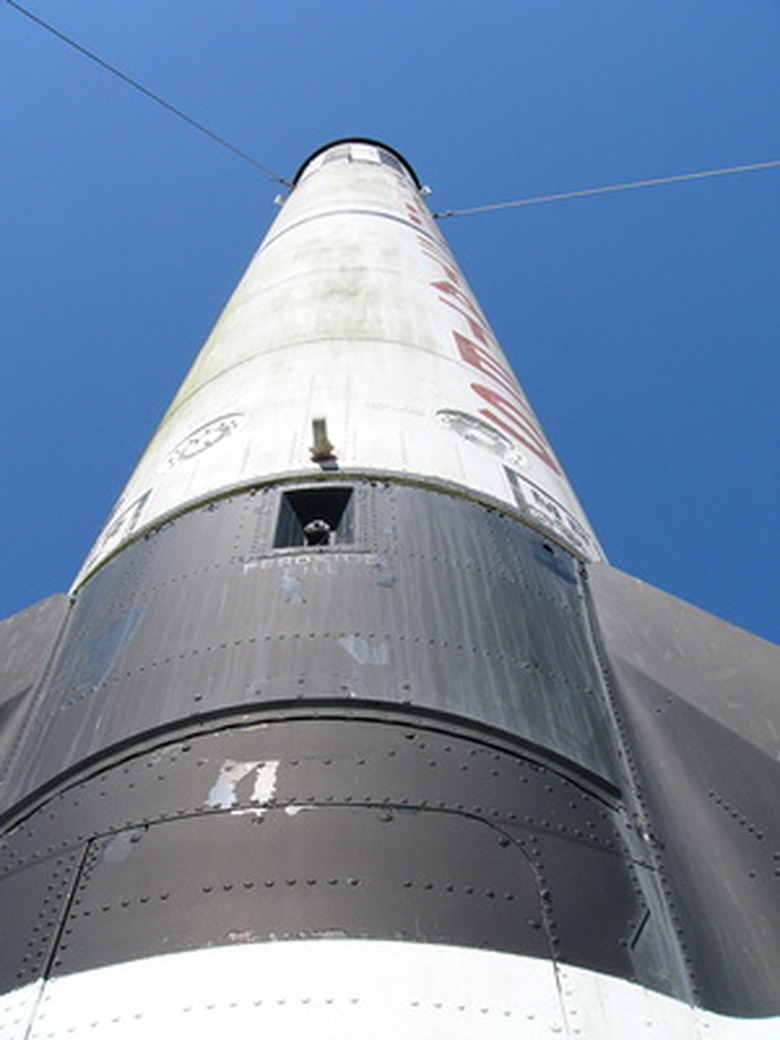Stages Of A Rocket Launch
Rockets are engines that produce their own propulsion using self-contained propellants, unlike car or airplane engines, which introduce outside air into the engine to produce thrust. Most earthbound rockets–such as fireworks–are single stage and use a chemical reaction that is sufficient for the rocket to travel the desired distance. However, for larger rockets that are meant to travel into space, a single stage rocket is insufficient, and a multi-stage rocket, powered by engines with propellants, oxygen and a combustion chamber, is required.
Primary Stage
Primary Stage
The primary stage of a rocket is the first rocket engine to engage, providing the initial thrust to send the rocket skyward. Usually the first stage is larger than the next stage, or stages, because it must transport not only its own weight, but the weight of the rest of the rocket. This engine will continue to operate until its fuel is exhausted, at which time it separates from the rocket and falls to the ground.
Secondary Stage
Secondary Stage
After the primary stage has fallen away, the next rocket engine engages to continue the rocket on its trajectory. The second stage has considerably less work to do, since the rocket is already traveling at high speed and the rocket's weight has significantly decreased due to the separation of first stage. If the rocket has additional stages, the process will repeat until the rocket is in space.
Payload
Payload
Once the payload, whether it be a satellite or a spacecraft, is in orbit, the rocket's final stage falls away, and the craft will be maneuvered using smaller rockets whose purpose is to guide the spacecraft. Unlike the main rocket engines, these maneuvering rockets can be used multiple times.
Cite This Article
MLA
Timm, Peter. "Stages Of A Rocket Launch" sciencing.com, https://www.sciencing.com/stages-rocket-launch-6922973/. 24 April 2017.
APA
Timm, Peter. (2017, April 24). Stages Of A Rocket Launch. sciencing.com. Retrieved from https://www.sciencing.com/stages-rocket-launch-6922973/
Chicago
Timm, Peter. Stages Of A Rocket Launch last modified August 30, 2022. https://www.sciencing.com/stages-rocket-launch-6922973/
